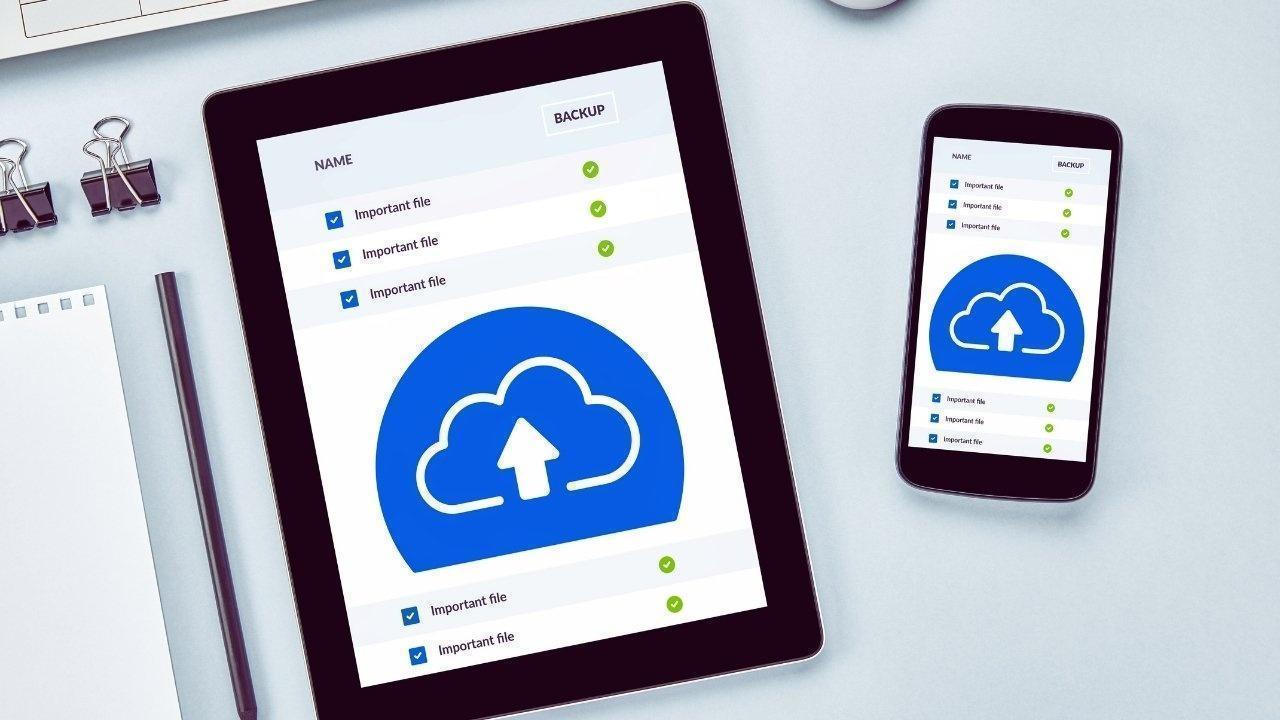
Join 10k+ people to get notified about new posts, news and tips.
Do not worry we don't spam!

Post by : Anis Farhan
Cloud storage has evolved from a luxury to a fundamental need. From work files and cherished family photos to vital financial PDFs and creative endeavors, our essential documents now reside on our phones and computers. As file sizes increase and storage capacities remain limited, cloud storage is like a digital pantry—some maintain it in pristine order, while others allow it to become cluttered with duplicates, disorganized folders, and dated screenshots.
Understanding how to effectively utilize cloud storage—knowing when to upgrade, what plans fit your needs, and strategies for organization—is crucial for streamlining your digital life. This knowledge saves you time, prevents data loss, alleviates stress on your devices, and establishes an efficient storage solution that is universally accessible.
This guide delves into the workings of cloud storage, compares free and paid tiers, discusses security measures, presents real-life applications, and offers a structured method to build an organized digital workspace.
Cloud storage allows you to save files on remote servers rather than on your devices.
Highlighted benefits include:
Accessing your files from any internet-connected device
Automatic backups to safeguard your data
Freeing up space on smartphones and laptops
Simplified sharing with others
Seamless synchronization across various devices
Minimized chances of losing data due to device malfunctions
Imagine it as a digital locker—always accessible, fully backed up, and expandable as needed.
Newer smartphone cameras capture high-resolution images and videos, while applications retain extensive caches, leading to rapid depletion of storage.
With most communication and documentation transitioning online, reliable storage solutions are essential.
Today’s users often navigate multiple devices—smartphones, laptops, tablets—requiring cohesive cloud synchronization.
One mishap can erase years of memories if backups aren't maintained.
Cloud storage alleviates the burden of manually organizing files.
Effective cloud storage provides not just space but also peace of mind.
Many platforms offer complimentary plans with specified limits.
Examples of free allowances include:
Google Drive: 15 GB
OneDrive: 5 GB
iCloud: 5 GB
Dropbox: 2 GB
Mega: 20 GB (with bonuses)
Free plans can serve:
Students for storing notes and documents
Individuals with minimal work files
Users who primarily store files offline
Light users who maintain frequent organization
Cost-free
Quick setup
Suitable for basic documents
Ideal for well-organized individuals
Insufficient for photos and videos
Clutter from email attachments (especially Google Drive)
Limited sharing and features
Results in fragmentation across apps
Poor family storage options
While free plans work, they often reveal limitations as workloads increase.
As file sizes and frequencies increase, paid solutions have become necessary.
Common paid options are:
Google One (from 100 GB up to multiple TB)
iCloud+ (50 GB to 2 TB)
OneDrive (included with Office 365)
Various Dropbox plans
Mega storage enhancements
Extensive photo libraries
Backups across multiple devices
Heavy-duty work files
Professional needs (design, film, writing)
Organizational needs
Facilitated search and sharing
Family sharing for multiple users
Ample storage capacity
Minimal pressure to constantly declutter
Automatic media backups
Improved file organization
Family sharing capabilities
Enhanced security measures
Ability for larger uploads
Streamlined syncing
Your devices are consistently full
You frequently delete photos to create space
Your computer displays storage alerts
You struggle to find critical files
You work remotely or freelance
You need backups for client projects
You travel often, risking data loss
Investing in paid plans simplifies your digital life, assisting in avoiding chaos.
Different services cater to various needs.
Ideal for Android users and individuals utilizing Gmail and Google services.
Strength: Integration and user-friendliness.
Best suited for Apple device users.
Strength: Seamless integration across devices.
Perfect for Windows users and professionals.
Strength: Bundled with Office suite.
Effective for collaboration and managing substantial files.
Strength: Consistent syncing.
Great for those seeking additional free storage options.
Strength: Generous free tier offerings.
Your choice should reflect your digital requirements; fewer platforms equal a more organized system.
For documents and light notes
Requirement: 5–15 GB
For photos, PDFs, occasional files
Requirement: 50–100 GB
Includes extensive media libraries and long-form content
Requirement: 200 GB to 1 TB
For multiple devices and shared memories
Requirement: 200 GB to 2 TB
When uncertain, begin with modest capacity and upgrade as necessary. Storage solutions are flexible.
Cloud services employ:
Encryption
Multi-factor security protocols
User access controls
Periodic backups
Standard industry authentication
User behavior is equally crucial.
Employ strong passwords
Activate two-factor authentication
Avoid sharing excessive public links
Secure your devices
Regularly audit shared files
Encrypt sensitive documents before uploads
Cloud storage can be safe in responsible hands.
Even with cloud solutions in place, many feel overwhelmed by unstructured storage.
Common pitfalls include:
Duplicate images
Scattered screenshots
Files strewn across various apps
Lack of a coherent folder scheme
Mass dumping into primary drives
Download folders overflowing with items
Mixing personal and work documents
Neglected backups for vital files
Cloud storage proves beneficial only when complemented by structure.
Follow this method for optimal results.
Limit yourself to five to seven main folders.
Suggested categories include:
Photos
Work Projects
Personal Documents
Bills/Receipts
Media
Projects
Miscellaneous
Avoid excessive main folders to maintain simplicity.
Add specific subfolders within each primary folder.
For example, within Photos:
2022
2023
2024
Events
Travel
Family
Screenshots
For Personal Documents:
Bank Statements
Medical Records
Education Materials
Certificates
Insurance Policies
Identity Documents
The goal is transparency—each file should be easily located.
Monthly tasks should include:
Eliminating duplicates
Removing poor-quality images
Organizing screenshots properly
Archiving outdated documents
Deleting unnecessary files
Clearing out your downloads folder
Regular cleaning helps avoid long-term disorder.
Set up automatic backups for:
Images
Videos
Optional WhatsApp media
Desktop files
Documents
Automation mitigates data loss and lessens manual effort.
Limit yourself to a single service.
Select from Google, iCloud, OneDrive, or Dropbox.
Choosing one platform leads to an organized workflow.
Clearly name files as follows:
Receipt_Jan2024
Passport Copy
Project_Draft_V2
Invoice_345
PhotoShoot_Day1
Clear and consistent names facilitate quick searches.
Create an 'Archive' folder for:
Past job files
Old bills
Outdated documents
Rarely accessed media
This keeps your primary folders uncluttered.
Restrict sharing files outright without expiry dates, and regularly review shared links for access control.
Photos typically consume ample space.
Enable backup for images
Remove duplicate files
Organize year/event-wise
Utilize selective syncing
Avoid saving rarely watched large videos
Daily clean temporary screenshots
While photographs are keepsakes, not all need to be archived.
Create a designated 'Work' folder with subsections like:
Projects
Clients
Presentations
Archives
Shared Files
Only retain essential materials and discard unused drafts.
Store crucial documents in one designated folder.
Digitize paperwork using your device for:
PAN Card
Aadhaar Card
Passport
Driving License
Certificates
Insurance Documents
Bills
Agreements
Preserve only secure copies and protect sensitive files with access controls.
Quicker access times
Reduced stress levels
Optimized device storage
Enhanced performance for laptops
No anxiety regarding file loss
Increased productivity
Clarity of mind
Your digital organization impacts your overall clarity in life.
Cloud storage underpins contemporary living. When utilized wisely, it saves precious hours, secures significant records, enhances productivity, and maintains a streamlined digital environment. A clean cloud system isn’t about perfection—it involves small, consistent practices that stave off disorder.
Select the cloud service that aligns with your needs, upgrade as warranted, implement a clear folder hierarchy, and commit to periodic clean-ups. With time, your cloud storage evolves into a well-ordered digital library, rather than a chaotic space.
Attention to your digital life is as vital as that given to your physical surroundings. A tidy cloud environment fosters efficiency, tranquility, and sustained command over your information.










MLB Awards Highlight deGrom, Acuna Jr., Ohtani, and Judge
Jacob deGrom and Ronald Acuna Jr. shine in MLB awards, claiming comeback honors while Ohtani and Jud

Ronaldo Steers Portugal in Critical World Cup Qualifier Against Ireland
Portugal, led by Cristiano Ronaldo, faces Ireland in a decisive World Cup qualifier, both teams vyin

New York Islanders Overcome Vegas with Overtime Win, 4-3
Jean-Gabriel Pageau nets a short-handed OT goal, leading the Islanders to a thrilling 4-3 victory ov

Haaland Shines as Norway Triumphs 4-1 Against Estonia
Erling Haaland's leadership fuels Norway's 4-1 win over Estonia, enhancing World Cup hopes for the f

Hawks Secure Victory Over Jazz; Suns and Raptors Triumph in High-Scoring Showdowns
The Atlanta Hawks, Phoenix Suns, and Toronto Raptors notch wins with standout performances, showcasi

India's Men's Recurve Team Clinches Asian Gold After 18 Years
After 18 years, India's men's recurve team triumphs in Dhaka, winning gold at the Asian Archery Cham